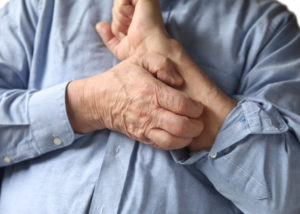One might thing that is over the top and not so important but the science behind the itching was always flimsy. The medicine did not really know why we itch and what the neurological basis behind the mundane itch was.
And it’s not over the top at all: chronic itch caused by dry skin, psoriasis, diabetes or even liver disease can be enraging, and the cause has long been a true medical mystery. There is even an Institute designed exclusively to study the All Mighty Itch – called the “Center for the Study of Itch (CSI)”, from Washington University School of Medicine, in St.Louis, Missouri, whose mission is “to increase our understanding of the fundamental underlying mechanisms of itch and translate these findings into treatments for patients suffering from chronic itch.”
Initially, the theory was that a single class of nerve cells detected both itch and pain. According to this theory, the type and intensity of the stimulus told the cells which sensory message to send up to the brain. The nervous system would then respond accordingly. At one level, the theory is correct: pain and itch, as well as heat, are all transmitted by a class of nerve cells known as TRPV1-expressing neurons. When scientists use genetic engineering to create mice that don’t have these cells, the animals don’t feel any of those three sensations.

When we itch, our initial reaction is to scratch it with our fingernails. This is because the pain of scratching helps to override the sensation of an itch. However, this can also create a vicious cycle, as eventually the pain of scratching is blocked out by serotonin in the brain. Without the pain as a distraction, we then feel the itch again. And so the cycle repeats. The best way to avoid this cycle from beginning is to avoid scratching in the first place, and instead, give an itch with no external source a little slap or rub.
But although pain can block out itch, some painkillers – such as morphine – can cause itchiness. And some things that cause itch also cause pain, such as capsaicin, the ingredient that makes chili peppers hot.
Scientists now have several theories about this odd connection between pain and itch. One theory suggests the same set of neurons produce an itch when activated slightly, but result in pain when activated fully. Alternatively, different cells might trigger pain and itch signals, but the signals might interact in the spinal cord. There is some evidence for both ideas.
But over the past 5-6 years new researched emerged.
The molecular geneticists Santosh Mishra and Mark Hoon of the National Institute of Dental and Craniofacial Research in Bethesda, Md., reported they had found specialized neurons that produce a chemical, called Nppb, that sets off the body’s itch response. Mice that were genetically altered to lack Nppb or in which the receptor for the chemical was damaged were resistant to itch-inducing chemicals — but still sensed pain and heat.
According to Hoon, identifying the neurons that act as “specialized gatekeepers” for this system may eventually lead to drugs that offer relief for people suffering from psoriasis, eczema and other difficult-to-treat forms of chronic itch. In this way, the riddle of the itch will have moved closer still toward being solved at last.
